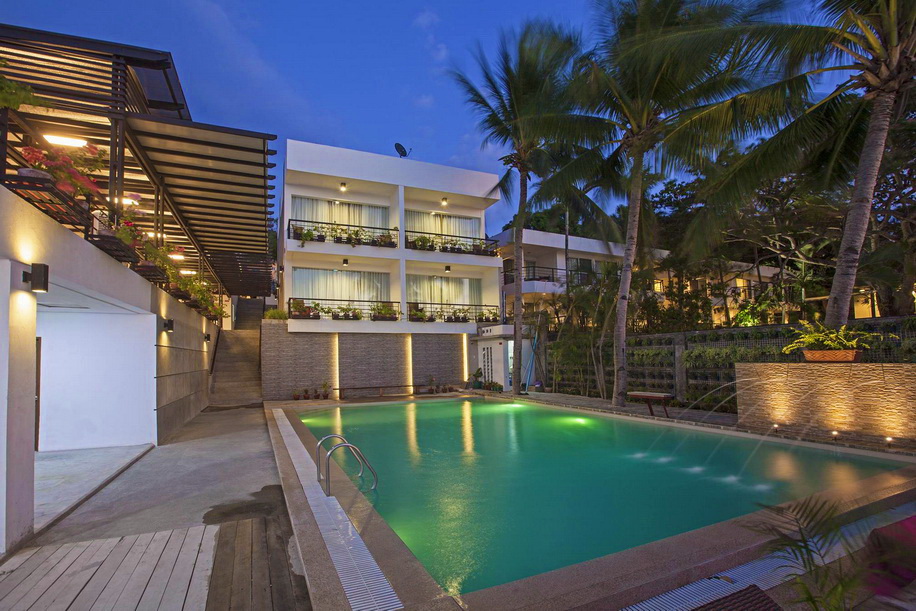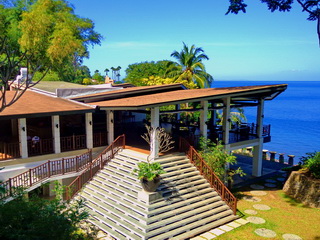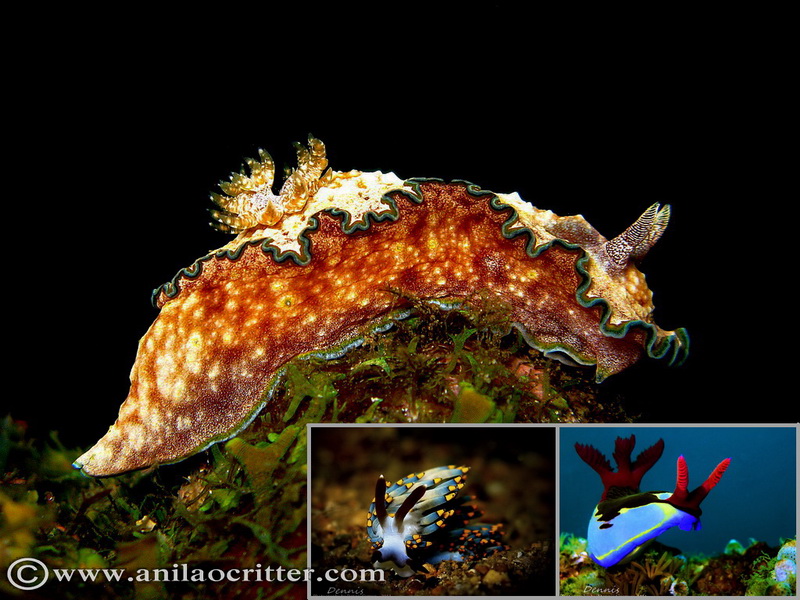ALL TIME FAVORITE CRITTERS |
CRITTERS LIST |
NUDIBRANCHS Defense mechanisms Nudibranchs that feed on hydroids can store the hydroids' nematocysts (stinging cells) in the dorsal body wall, the cerata. These stolen nematocysts, called kleptocnidae, wander through the alimentary tract without harming the nudibranch. Once further into the organ, the cells are brought to specific placements on the creature's hind body via intestinal protuberances. Nudibranchs can protect themselves from the hydroids and their nematocysts. It is not yet clear how, but special cells with large vacuoles probably play an important role. They can also take in plants' chloroplasts (plant cell organelles used for photosynthesis) and use them to make food for themselves. Nudibranchs use a variety of chemical defenses to aid in protection, but it is not necessary for the strategy to be lethal in order to be effective: some successful toxins induce bradycardia or hypotension in a predator, allowing the nudibranch to escape consumption while its attacker is incapacitated. Some sponge-eating nudibranchs concentrate the toxins from their prey sponge in their bodies, rendering themselves toxic to predators. The evidence that suggests the toxins used by dorid nudibranchs do in fact come from dietary sponges lies in the similarities between the primary and secondary metabolites of prey and nudibranchs, respectively. Furthermore, nudibranchs contain a mixture of sponge chemicals when they are in the presence of multiple food sources as well as change defense chemicals with a concurrent change in diet. This, however, is not the only way for nudibranchs to develop chemical defenses. Certain species are able to produce their own chemicals de novo without dietary influence. Evidence for the different methods of chemical production comes with the characteristic uniformity of chemical composition across drastically different environments and geographic locations found throughout de novo production species compared to the wide variety of dietary and environmentally dependent chemical composition in sequestering species. Another method of protection is the release of an acid from the skin. Once the specimen is physically irritated or touched by another creature, it will release the mucus automatically.
|
Oscellated octopus "MOTOTI"Rudman's phyllodesmiumJakobsen's phyllodesmiumEmperor shrimpColeman shrimpSkeleton shrimpBobtail squidGhostpipe fishSeahorsesSaw-blade shrimpFlamboyant cuttlefishPygmy seahorseMarble shrimpSquat lobsterNudibranchsNudibranchs 2Electric scallop
|

Scuba Dive in Anilao Underwater Macro Photography |Anilao Muck dive,Dive package
anilao philippines|anilao philippines resorts|anilao resorts|anilao resort|anilao resort in batangas|anilao resort batangas|anilao resort cheap|anilao resort map|anilao resort diving|anilao resort philippines|anilao resorts philippines|resort in anilao|resort in anilao batangas|resorts in anilao mabini batangas|dive resorts in batangas|dive resorts in anilao batangas|dive resort in anilao|dive resort philippines|diving resort in anilao|Divers and Critters - Anilao Diving, Dive Resort, Dive Package in Anilao
.jpg)


